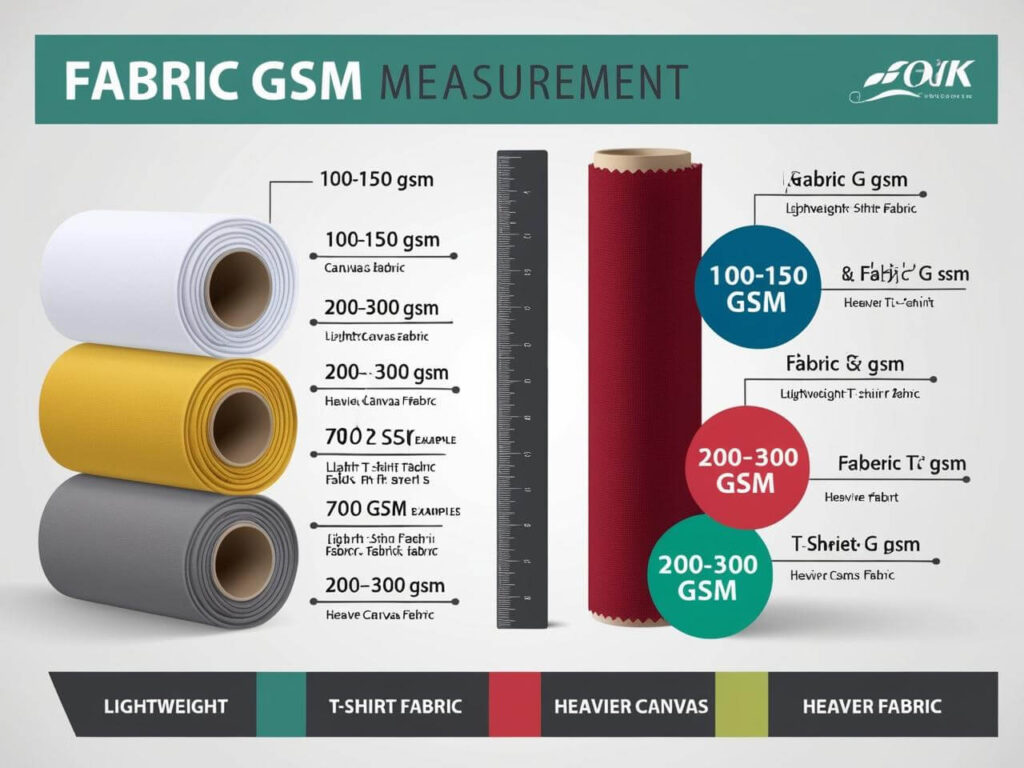Introduction
When it comes to choosing the right fabric for a project, one of the most important metrics to consider is GSM (Grams per Square Meter). GSM measures a fabric’s weight and density, giving you a clear understanding of how thick or thin the material is. Whether you’re designing clothing, quilting, or upholstery, understanding GSM helps you select the right fabric for the job.
As someone who’s worked on various projects, I can tell you that the right GSM can make a huge difference in the comfort, durability, and suitability of the fabric for its intended use.
In this guide, you’ll learn:
✔ What GSM in fabric means and how it impacts quality.
✔ How to calculate GSM for any fabric at home.
✔ Common GSM ranges for different fabric types and their best uses.
Let’s dive into everything you need to know about GSM and how to make smarter fabric choices!
What is GSM in Fabric? (Definition & Basics)
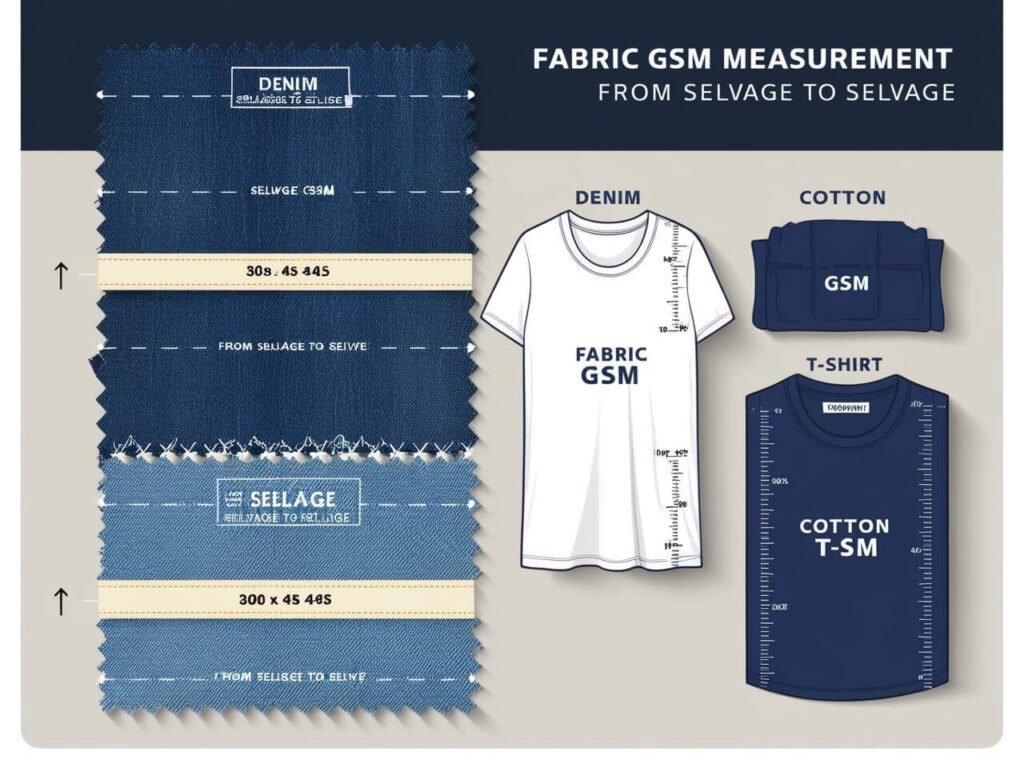
GSM stands for Grams per Square Meter, and it is a measurement that indicates the weight and density of fabric. It tells you how much one square meter of fabric weighs, which can give you an idea of its thickness, softness, and overall quality.
🔹 Key Fabric GSM Terminology
✔ Selvage: The tightly woven edge of the fabric that prevents it from fraying.
✔ WOF (Width of Fabric): The measurement from selvage to selvage.
✔ Weight: The term used to describe how heavy or light the fabric feels, which is determined by its GSM.
🔹 How Does GSM Affect Fabric Properties?
✔ Higher GSM means heavier fabric – More dense and durable, making it suitable for winter clothing, upholstery, or canvas items.
✔ Lower GSM means lighter fabric – Often breathable and comfortable, ideal for summer wear, t-shirts, and bedding.
How GSM Impacts Fabric Properties
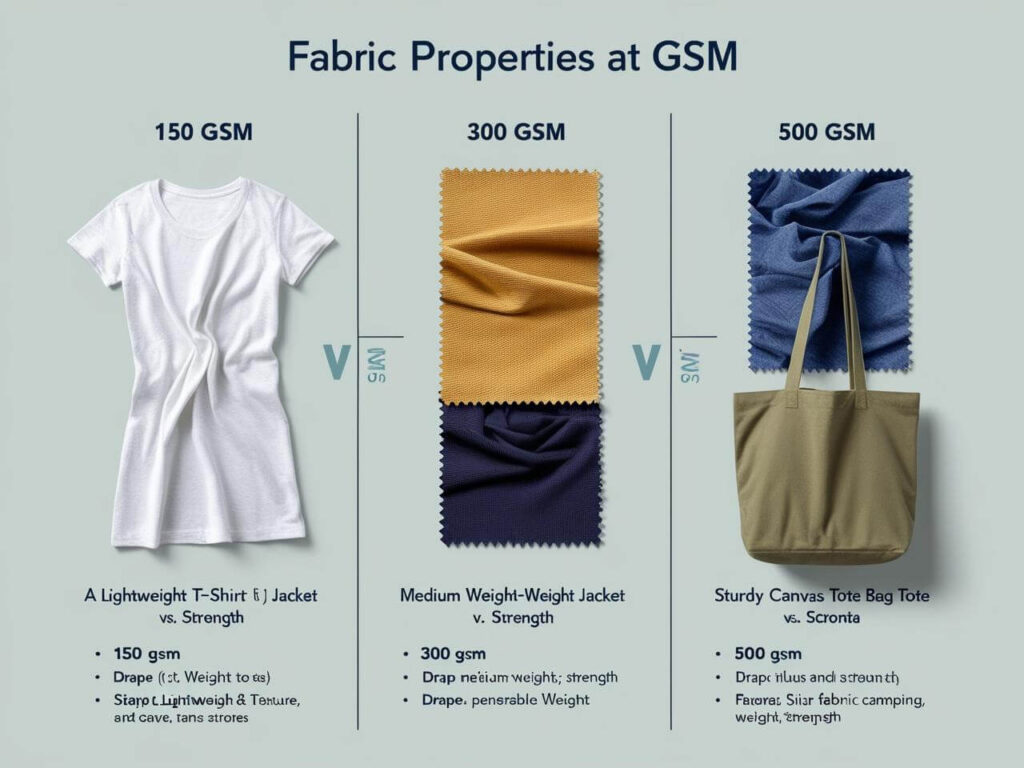
The GSM (Grams per Square Meter) of fabric directly affects its feel, durability, and suitability for different uses. Fabrics with higher GSM are typically heavier, denser, and more durable, while fabrics with lower GSM tend to be lighter, softer, and more breathable.
🔹 The Impact of GSM on Fabric Properties
1️⃣ Comfort and Feel
✔ Higher GSM fabrics tend to feel heavier and thicker, which can make them more comfortable for colder climates.
✔ Lower GSM fabrics are lighter and more breathable, ideal for warm weather and active wear.
2️⃣ Durability and Strength
✔ Higher GSM fabrics like denim or canvas are stronger and abrasion-resistant, making them ideal for bags, jackets, or upholstery.
✔ Lower GSM fabrics such as cotton or jersey are generally less durable, but they are perfect for lightweight clothing and bed linens.
3️⃣ Usage and Application
✔ Higher GSM fabrics (200-600 GSM) are best for outerwear, upholstery, and thicker items.
✔ Lower GSM fabrics (100-150 GSM) work best for t-shirts, dresses, and light bedding.
Common GSM Ranges for Different Fabrics
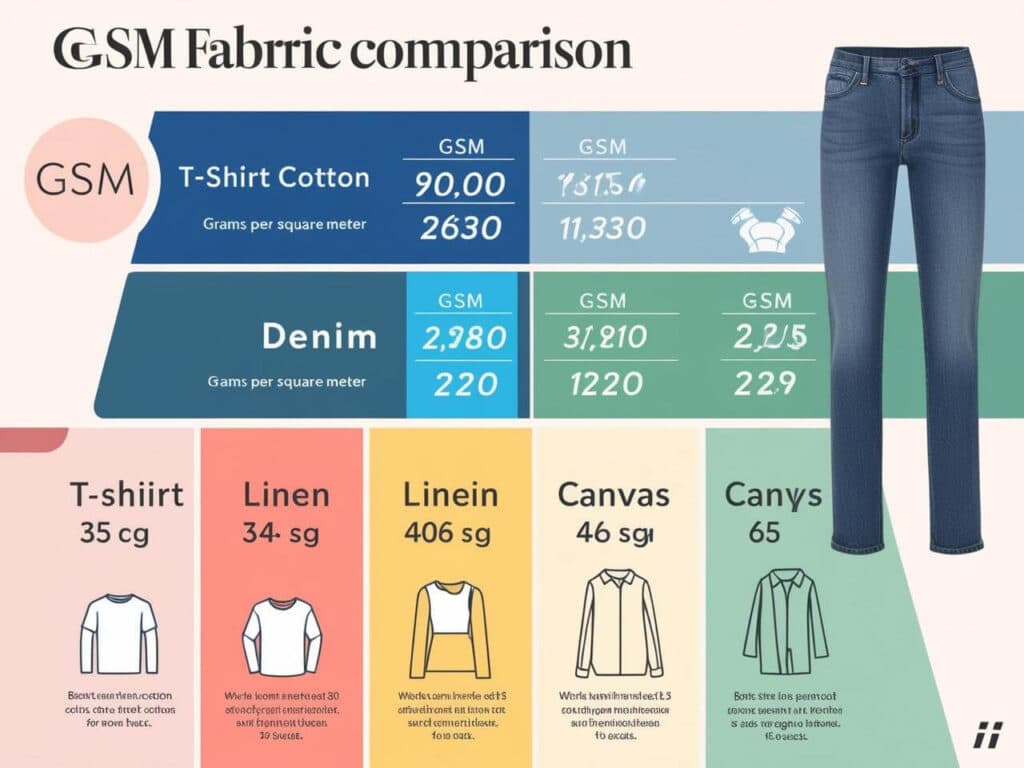
Understanding the GSM range of different fabrics is key to selecting the right material for your project. Here’s a breakdown of common fabric types and their typical GSM values, along with their ideal uses:
🔹 Common Fabric GSM Ranges
| Fabric Type | GSM Range | Typical Uses |
| T-shirt Cotton | 140-180 GSM | Casual wear, light t-shirts |
| Bedsheet Cotton | 150-200 GSM | Bedding, pillowcases |
| Denim | 250-450 GSM | Jeans, jackets, durable pants |
| Linen | 150-200 GSM | Summer wear, lightweight shirts, bedding |
| Canvas | 300-600 GSM | Bags, upholstery, outdoor gear |
🔹 Key Takeaways
✔ Lightweight fabrics (100-200 GSM) are ideal for summer wear, bed sheets, and casual clothing.
✔ Heavier fabrics (250-600 GSM) are suitable for outdoor gear, heavy-duty jackets, and upholstery due to their strength and durability.
✔ The GSM range for each fabric type affects comfort, breathability, and use case.
How to Calculate GSM at Home
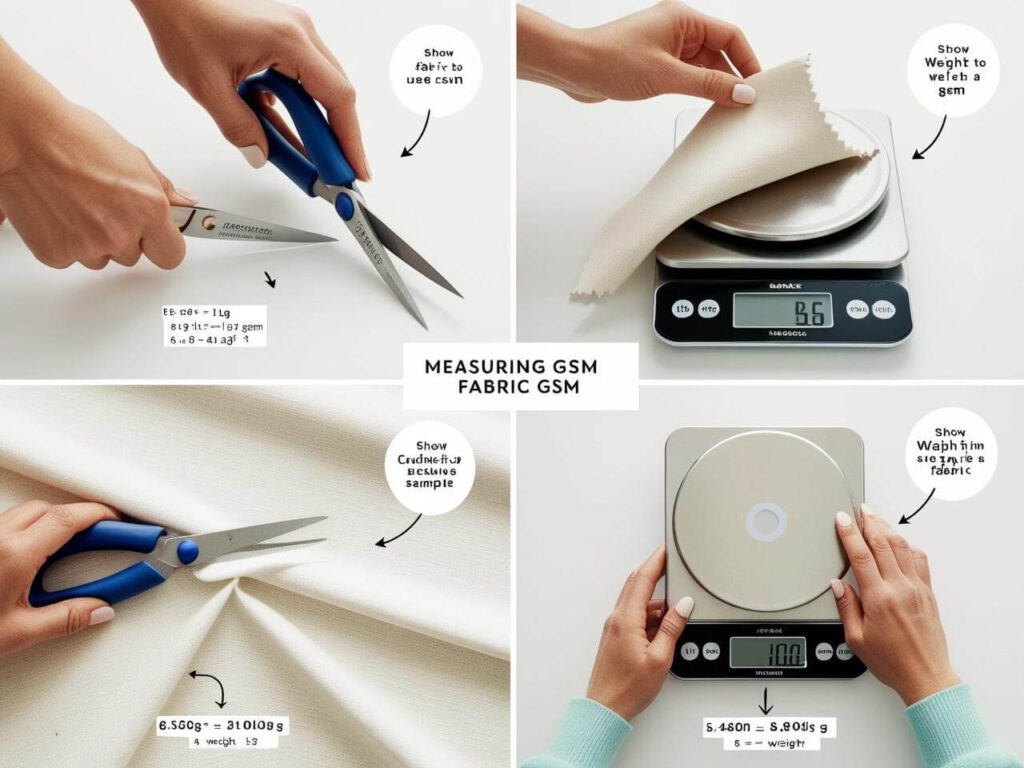
You don’t need specialized equipment to calculate GSM (Grams per Square Meter) for fabric at home. Here’s a simple step-by-step guide to help you measure the GSM of any fabric:
🔹 Step-by-Step Guide to Calculating GSM
1️⃣ Cut a 10cm x 10cm Sample:
- Use a square-shaped piece of fabric (about 10cm by 10cm), making sure it’s cut precisely for accurate results.
- Tip: Use fabric scissors for a clean, straight cut.
2️⃣ Weigh the Fabric Sample:
- Use a precision scale to measure the weight of your fabric sample in grams.
- Tip: Ensure the scale is zeroed out before weighing.
3️⃣ Use the Formula to Calculate GSM:
- The formula for calculating GSM is:
GSM = (Weight of fabric sample in grams / Area of sample in cm²) x 10000
- Example: If your 10cm x 10cm fabric weighs 5 grams, the calculation would be:
GSM = (5 grams / 100 cm²) x 10000 = 500 GSM
4️⃣ Record the GSM Value:
- This will give you the weight per square meter of fabric, which helps you determine if the fabric is lightweight or heavy-duty.
🔹 Pro Tip:
If you’re measuring larger fabric samples, simply adjust the calculation by using a larger piece and the appropriate area.
FAQs (People Also Ask)
Here are answers to some of the most frequently asked questions about GSM in fabric, based on Google’s “People Also Ask” section.
❓ What does GSM mean in fabric?
✔ GSM stands for Grams per Square Meter, which measures the weight and density of fabric. The higher the GSM, the heavier and denser the fabric.
❓ How do you calculate GSM in fabric?
✔ To calculate GSM:
- Cut a 10cm x 10cm sample of fabric.
- Weigh the fabric sample in grams.
- Use the formula:
GSM = (Weight of fabric sample in grams / Area of sample in cm²) x 10000
❓ What is the GSM of a t-shirt?
✔ T-shirt fabric usually has a GSM range of 140-180 GSM, making it lightweight and breathable for comfortable wear.
❓ What is the GSM of denim fabric?
✔ Denim fabric typically has a GSM range of 250-450, making it thick, strong, and durable, ideal for jeans and jackets.
❓ Does higher GSM mean better quality?
✔ Not necessarily. A higher GSM means thicker, more durable fabric, but the best GSM depends on the intended use. For example, lightweight fabrics with lower GSM are ideal for summer wear, while heavier fabrics are suited for outerwear and upholstery.
Conclusion – Understanding GSM for Smarter Fabric Shopping
GSM (Grams per Square Meter) is a valuable measurement for determining the weight, thickness, and suitability of fabric for various projects. Whether you’re working with light t-shirt cotton or heavy-duty denim, knowing the GSM helps ensure that your fabric fits your needs—from comfort and durability to intended use.
✔ Key Takeaways:
- GSM directly affects the weight and feel of fabric, making it essential for choosing the right material.
- Higher GSM fabrics are thicker and more durable, ideal for outerwear and upholstery.
- Lower GSM fabrics are light and breathable, perfect for summer clothing or casual wear.
✔ Final Tips:
- Measure fabric GSM to ensure you’re getting the right weight for your project.
- Check fabric width and GSM before purchasing to ensure the correct fit and performance for your needs.
- Always choose the GSM based on the fabric’s intended use—whether it’s activewear, bedding, or outerwear.
Final Thoughts
Understanding GSM in fabric allows you to make better-informed fabric choices, ensuring your projects are both functional and comfortable. So, next time you shop for fabric, keep the GSM in mind for smarter, more efficient fabric selection!
